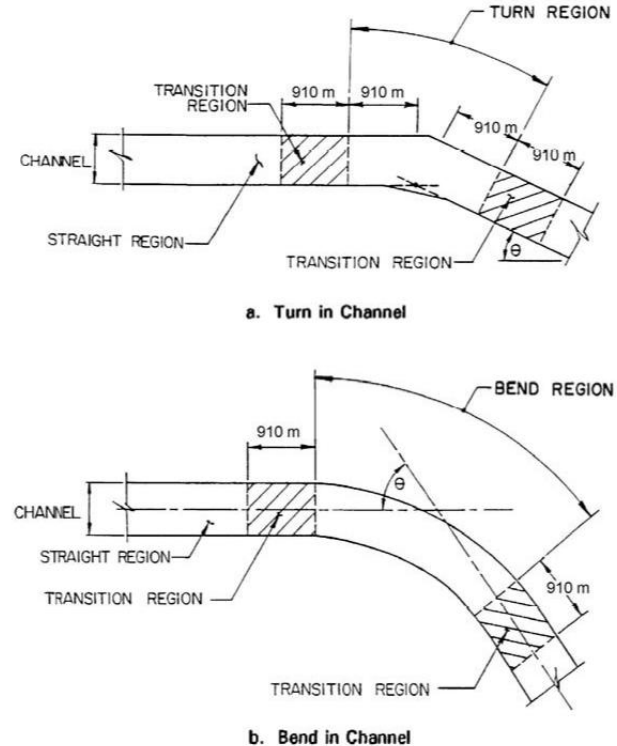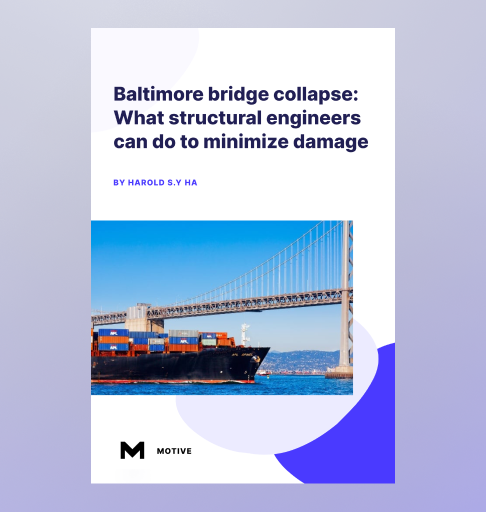1. Introduction
On March 26, the main spans of the Francis Scott Key Bridge at Baltimore collapsed after a container ship lost power and collided with one of its piers. According to NBC News, unfortunately, it is estimated that six nighttime workers have died. Accidents due to ships or barges colliding with bridges occur frequently worldwide. In the period from 1960 to 2015, there have been 35 major bridge collapses worldwide due to ship or barge collision with a total loss of life of 342 people. (Source: Ship And Barge Collisions With Bridges Over Navigable Waterways) We cannot eliminate accidents, but structural engineers can minimize the damage caused by them. Structural engineers ensure stability by finding the optimal structure through simulations and analyses of various variables such as ship collisions and earthquakes.
In this content, we will explore methods for calculating Vessel Collision probability based on AASHTO standards and Korean design standards, and discuss how to assess the risk of ship collisions on bridges.
All bridge components in a navigable waterway crossing, located in design water depths not less than 600mm, shall be designed for vessel impact. (AASHTO LRFD Bridge Design Specifications 4th Edition 2007)
This technical content aims to explore:
Probability of aberrancy
Geometric Probability
Probability of Collapse
Design Collision Velocity
Vessel Collision Energy
to calculate the annual Frequency of Collapse of bridge components.
2. Annual Frequency of Collapse
The annual frequency of a bridge component collapse is calculated using the following equation.
AF=(N)(PA)(PG)(PC)
where:
AF = annual frequency of bridge component collapse due to vessel collision
N = the annual number of vessels, classified by type, size, and loading condition, that utilize the
channel
PA = the probability of vessel aberrancy
PG = the geometric probability of a collision between an aberrant vessel and a bridge pier or span
PC = the probability of bridge collapse due to a collision with an aberrant vessel
(1) Vessel Frequency Distribution
Based on size, type, and loading condition and available water depth, the number of vessels(N) shall be calculated for each pier and span component.
Depending on waterway conditions, a differentiation between the number and loading condition of vessels transiting inbound and outbound shall be considered.
Vessel characteristics necessary to conduct the analysis include:
-Length overall
-Width
-DWT
-Number of transits under the bridge each year
(2) Probability of Aberrancy
The probability of vessel aberrancy, PA, may be determined by the statistical or the approximate method. This document uses an approximate method to calculate the Probability of Aberrancy.
The probability of aberrancy may be taken as:
PA=(BR)(RB)(RC)(RXC)(RD)
where:
PA = probability of aberrancy
BR = aberrancy base rate
RB = correction factor for bridge location
RC = correction factor for current acting parallel to vessel transit path
RXC = correction factor for cross-currents acting perpendicular to vessel transit path
RD = correction factor for vessel traffic density
The base rate, BR, of aberrancy shall be taken as:
For ships:
BR = 0.6 * 10-4
For barges:
BR = 1.2 * 10-4
The correction factor for bridge location, RB, based on the relative location of the bridge in either of three waterway regions, as shown in Figure 1, shall be taken as:
For straight regions:
RB = 1.0
For transition regions:
RB = 1 + θ/90°
For turn/bend regions:
RB = 1 + θ/45°
where:
θ = angle of the turn or bend specified in Figure 1 (°)
 Figure 1. Waterway Regions for Bridge Location (AASHTO LRFD Bridge Design Specifications 4th Edition 2007)
Figure 1. Waterway Regions for Bridge Location (AASHTO LRFD Bridge Design Specifications 4th Edition 2007)
The correction factor, RC, for currents acting parallel to the vessel transit path in the waterway shall be taken as:
RC = 1 + VC/19
where:
VC = current velocity component parallel to the vessel transit path (km/hr.)
The correction factor, RXC, for cross-currents acting perpendicular to the vessel transit path in the waterway shall be taken as:
RXC = 1.0 + 0.54VxC
where:
VxC = current velocity component perpendicular to the vessel transit path (km/hr.)
The correction factor for vessel traffic density, RD, shall be selected on the basis of the ship/barge traffic density level in the waterway in the immediate vicinity of the bridge defined as:
Low density—vessels rarely meet, pass, or overtake each other in the immediate vicinity of the
bridge:
RD = 1.0
Average density—vessels occasionally, pass, or overtake:
RD = 1.3
You can check more of these details in the download file.
(3) Geometric Probability
(4) Probability of Collapse
3. Collision Velocity
4. Vessel Collision Energy
5. Conclusion
References
"Six presumed dead after cargo ship crash levels Baltimore bridge" (2024) NBC NEWS, by Julia Jester, Patrick Smith, Phil Helsel and Corky Siemaszko
"Ship And Barge Collisions With Bridges Over Navigable Waterways" (2018) by Michael Knott, P.E. and Mikele Winters, P.E.
Korean Design Standard (2021) : KDS 24 12 21
AASHTO (2007). LRFD Bridge Design Specifications, 4th Edition, American Association of State
Highway and Transportation Officials (AASHTO), United States.
#Vessel Collision
/harold%20ha.png)
I am a structural engineer who is interested in all structures from civil structures to offshore structures.
Based on various practical experiences, I would like to introduce engineering more easily.
And I want to be able to share my thoughts and enjoy the various attempts that can improve the efficiency of engineering work with you.
I hope every engineer who reads my contents will get even the slightest inspiration and motivation needed for the engineer's journey.
※ You can view related content by clicking on the keywords below.



![Design and Practical Examples of Baseplates and Anchor Rods [sample download]](https://2495902.fs1.hubspotusercontent-na1.net/hubfs/2495902/%EC%8D%B8%EB%84%A4%EC%9D%BC22.png)
![Understanding Drafting Standards [ Drawing download ]](https://2495902.fs1.hubspotusercontent-na1.net/hubfs/2495902/%EC%8D%B8%EB%84%A4%EC%9D%BC24.png)
![Key Changes in ACI 318-19: A New Standard for Structural Design [ PDF download]](https://2495902.fs1.hubspotusercontent-na1.net/hubfs/2495902/%EC%8D%B8%EB%84%A4%EC%9D%BC21-1.png)
![Design and Practical Examples of Lug design(ASME BTH-1) [sample download]](https://2495902.fs1.hubspotusercontent-na1.net/hubfs/2495902/%EC%8D%B8%EB%84%A4%EC%9D%BC20-1.png)




